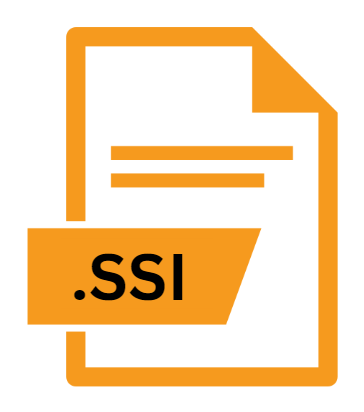.SSI File Extension

Adobe Dreamweaver Server Side Include File
| Developer | Adobe Systems |
| Popularity | |
| Category | Developer Files |
| Format | .SSI |
| Cross Platform | Update Soon |
What is an SSI file?
The .SSI file extension is primarily associated with Adobe Dreamweaver, a popular web development tool used to create and manage websites.
Standing for Server Side Include, these files play a crucial role in web development by allowing developers to include content dynamically within web pages.
In this article, we delve into the origin, history, structure, advantages, and disadvantages of .SSI files, along with guidance on how to work with them across different operating systems.
More Information.
Adobe Dreamweaver adopted the .SSI file extension as a means to incorporate server-side scripting functionality into its web development environment.
Originally introduced in the late 1990s, Dreamweaver provided a user-friendly interface for designing websites while empowering developers to utilize advanced server-side technologies like SSI.
The primary purpose of .SSI files are to enable the inclusion of reusable content within web pages. This content could range from headers, footers, navigation menus, to entire sections of HTML code.
By separating the static and dynamic elements of a website, developers can maintain consistency across multiple pages and facilitate easier updates.
Origin Of This File.
The concept of Server Side Includes (SSI) originated in the early days of web development when websites were predominantly static.
Developers sought ways to include dynamic content within web pages without resorting to complex scripting languages.
This led to the creation of SSI, a method for embedding content into HTML documents that is processed by the web server before being served to the client’s browser.
File Structure Technical Specification.
SSI files typically contain snippets of code or markup that are meant to be dynamically included within other web pages.
These snippets often encompass HTML, JavaScript, or other server-side scripting languages such as PHP or ASP.
The inclusion mechanism is facilitated by the server, which parses the SSI directives embedded within the HTML code and replaces them with the corresponding content.
The syntax for SSI directives usually involves specific tags or commands prefixed with <!--#, followed by the directive name and any necessary parameters, and concluded with -->.
Common directives include include, echo, if, and else, each serving distinct purposes in manipulating content or executing conditional logic.
How to Convert the File?
Converting SSI files to other formats typically involves integrating the included content directly into the target web pages.
This process may vary depending on the specific development environment or tools being utilized. In Adobe Dreamweaver, for instance, developers can manually copy the content from SSI files and paste it into the respective web pages, ensuring proper integration and functionality.
Alternatively, developers may opt to migrate from SSI-based architectures to more modern frameworks or content management systems (CMS) that offer enhanced functionality and flexibility.
This transition may involve rewriting existing code or implementing alternative solutions to achieve the desired functionality while minimizing reliance on SSI files.
Advantages And Disadvantages.
Advantages:
- Modularity: .SSI files promote modular design by allowing developers to separate content into reusable components.
- Ease of Maintenance: Updates to shared content, such as headers and footers, can be made in a single file, reducing maintenance overhead.
- Server-side Processing: Since SSI directives are processed by the web server, there’s no dependency on client-side scripting, improving performance and security.
Disadvantages:
- Limited Functionality: SSI is relatively basic compared to modern server-side scripting languages like PHP or ASP.NET, limiting its capabilities for complex web applications.
- Server Configuration: SSI functionality must be enabled on the web server, which may not be available or supported by all hosting providers.
- Debugging Complexity: Troubleshooting SSI-related issues can be challenging, especially when dealing with nested includes or conditional statements.
How to Open SSI?
Open In Windows
- Notepad++: Download and install Notepad++ from its official website. Once installed, open Notepad++ and navigate to File > Open to browse for the SSI file.
- Sublime Text: Install Sublime Text from its official website. Launch Sublime Text and go to File > Open to select the SSI file.
- Visual Studio Code: Download and install Visual Studio Code from its official website. Open Visual Studio Code and use File > Open to locate and open the SSI file.
Open In Linux
- Vim: Open a terminal and navigate to the directory containing the SSI file. Type
vim filename.ssiand press Enter to open the file in the Vim text editor. - Emacs: Launch Emacs and use the File menu to open the SSI file, or open a terminal and type
emacs filename.ssito open it directly. - Geany: Install Geany using your package manager. Open Geany and use File > Open to select the SSI file.
Open In MAC
- TextMate: Download and install TextMate from its official website. Launch TextMate and go to File > Open to select the SSI file.
- Atom: Install Atom from its official website. Open Atom and use File > Open to browse for the SSI file.
- BBEdit: Download and install BBEdit from its official website. Launch BBEdit and go to File > Open to select the SSI file.













